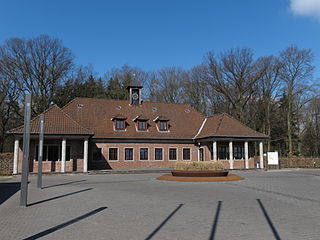 W
WA börde is a region of highly fertile lowland in North Germany, a "fertile plain". These landscapes often cover great areas and are particularly important for arable farming on account of their rich soils.
 W
WThe Federal Agricultural Research Center (FAL), headquartered in Braunschweig, was a federal authority of the Federal Ministry of Food, Agriculture and Consumer Protection. On January 1, 2008, FAL was split into the Johann Heinrich von Thünen Institute, the Julius Kuehn Institute and the Friedrich Loeffler Institute.
 W
WFlurbereinigung is the German word best translated as land consolidation. Unlike the land reforms carried out in the socialist countries of the Eastern Bloc, including East Germany, the idea of Flurbereiningung was not so much to distribute large quasi-feudal holdings to the formerly landless rural workers and/or to Kolkhoz-style cooperatives, but rather to correct the situation where after centuries of equal division of the inheritance of small farmers among their heirs and unregulated sales, most farmers owned many small non-adjacent plots of land, making access and cultivation difficult and inefficient. Two other European countries where this kind of land reform has been carried out are France (remembrement) and the Netherlands (ruilverkaveling).
 W
WThe Gesellschaft zur Erhaltung alter und gefährdeter Haustierrassen or GEH is a German national association for the conservation of historic and endangered domestic animal breeds.
 W
WThe Hallertau or Holledau is an area in Bavaria, Germany. With an area of 178 km², it is listed as the largest continuous hop-planting area in the world. According to the International Hop Growing Convention, Germany produces roughly one third of the world's hops, over 80% of which are grown in the Hallertau.
 W
WHauberg is a type of communal forest management that is typical of the Siegerland and adjacent parts of the Lahn-Dill Uplands and the Westerwald in central Germany. Its aim is to manage the forest in order to produce tanbark and charcoal for the regionally important iron ore industry as well as firewood. In addition to forestry uses, the area also has agricultural uses, such as the growing of rye and buckwheat, typical of shifting cultivation, in the year after the timber harvest, as well as subsequent communal grazing (commons).
 W
WAn Old Frisian farmhouse is a small unit farmhouse (Wohnstallhaus) that combined the farmer's living area and animals' stalls, and had limited space for storing harvest products. It was widely distributed across the North German Plain until the middle of the 17th century and was the forerunner of the Gulf house.
 W
WThe Reich Harvest Thanksgiving Festival was a monumental Nazi German celebration of the peasantry and the German farmers. The festivals ran from 1933 to 1937 on the Bückeberg, a hill near the town of Hamelin. Most festivals occurred every October, with the 1934 festival commencing 30 September. The official purpose of the festival was the recognition of the achievements of the German farmers, whom the Nazis called the Reichsnährstand. The celebration was also used by the Nazis as a propaganda tool to showcase the connection between Führer Adolf Hitler and the German people. The festival was part of a cycle of Nazi celebrations which included the annual party rally at Nuremberg, Hitler's birthday celebrations and other important events on the Nazi calendar.
 W
WThe Reichsnährstand or Reich Food Society, was a government body set up in Nazi Germany to regulate food production.
 W
WThe war against the potato beetle was a campaign launched in Warsaw Pact countries during the Cold War to eradicate the Colorado potato beetle. It was also a propaganda operation that alleged that the insect was introduced into East Germany, the People's Republic of Poland and Communist Czechoslovakia by the United States as a form of entomological warfare. Communist propaganda of the time claimed that the insect was being dropped from parachutes and balloons, with the intent of immiserating the populations of these countries, causing famines, and facilitating an economic crisis.